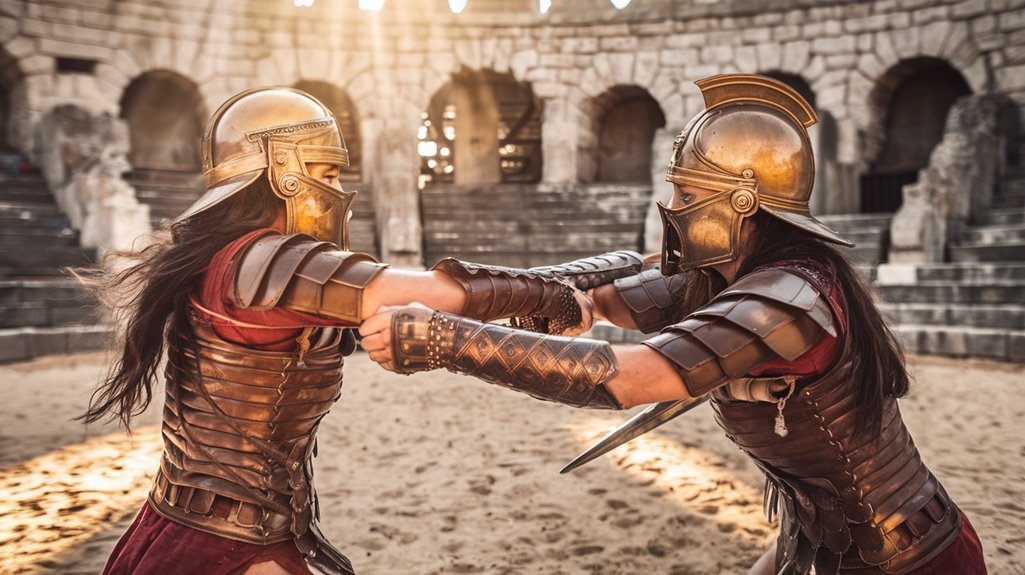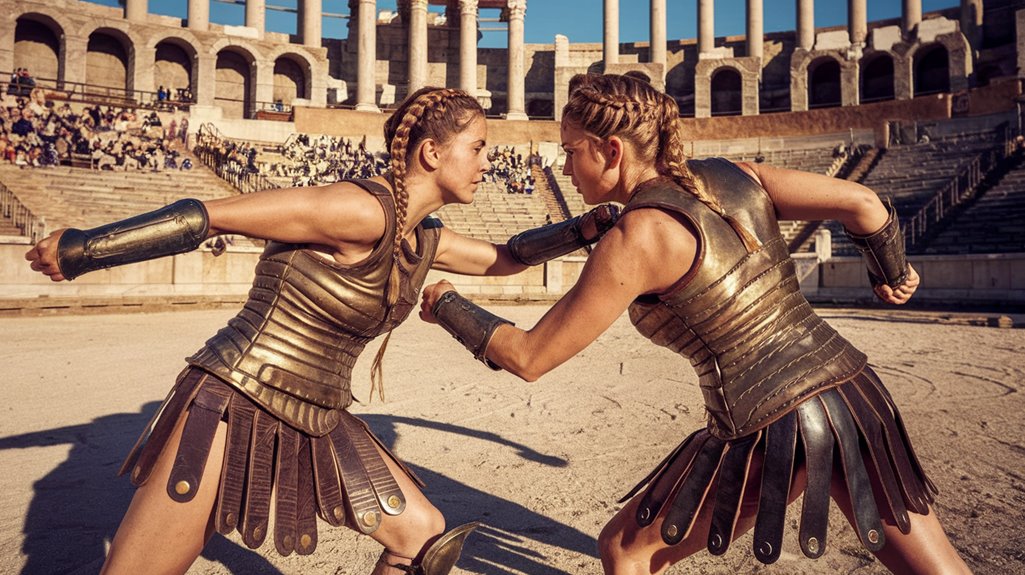Female Gladiators Fought in Ancient Roman Arenas
Like shards of shattered marble in Rome's grand amphitheaters, the legacy of female gladiators cuts through conventional historical narratives. You'll find that these remarkable women, known as gladiatrices, weren't merely footnotes in ancient Roman society—they were skilled warriors who commanded attention in the same blood-soaked arenas as their male counterparts. While you might assume gladiatorial combat was exclusively a man's domain, the stories of fighters like Amazon and Achillia suggest otherwise. There's much more to uncover about these boundary-breaking women who defied both death and social expectations in equal measure.
Female Gladiators Break Gender Boundaries

While ancient Rome was largely patriarchal, female gladiators emerged as a striking challenge to traditional gender roles during the first and second centuries CE.
You'll find that these remarkable women, known as gladiatrices, shattered societal expectations by training alongside men in gladiatorial schools and wielding the same weapons and armor. Their rigorous training included repetitive drills against wooden posts to perfect their combat techniques. Their presence in the arena wasn't just entertainment – it represented a dramatic shift in Roman culture.
From Nero's reign to Domitian's games, female gladiators proved their combat skills against both beasts and other fighters. Famous warriors like Amazon and Achillia earned recognition through their fierce fighting abilities.
While upper-class women occasionally participated, most gladiatrices came from lower social ranks. Despite facing criticism from some Roman elites who saw them as a symbol of moral decay, these warriors earned fame and recognition until Emperor Septimius Severus banned their participation in 200 AD.







